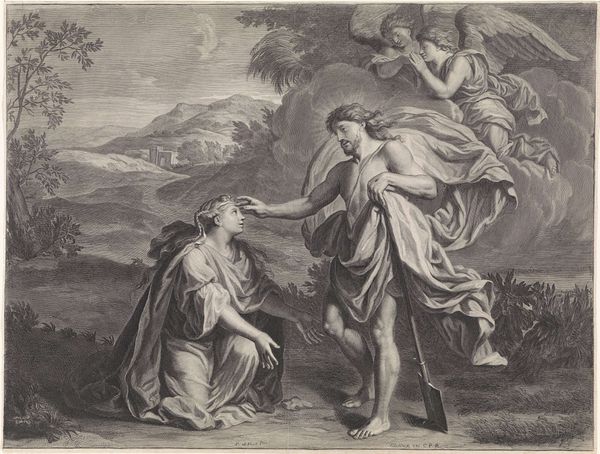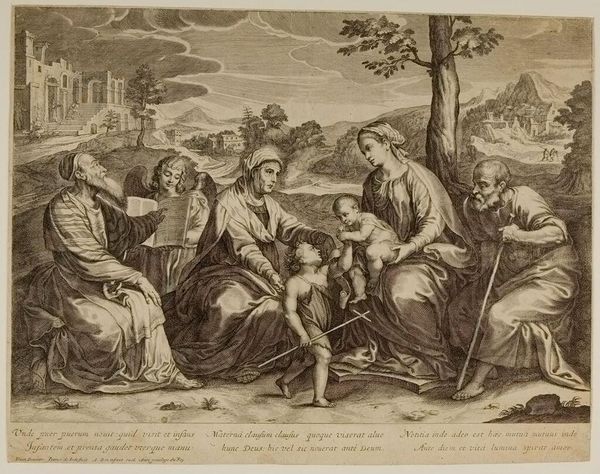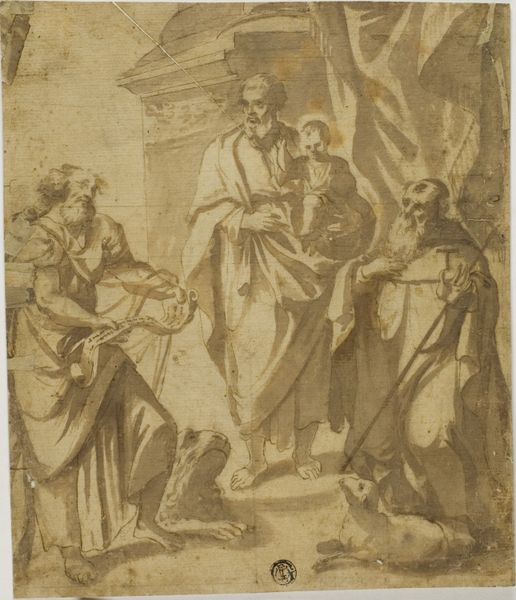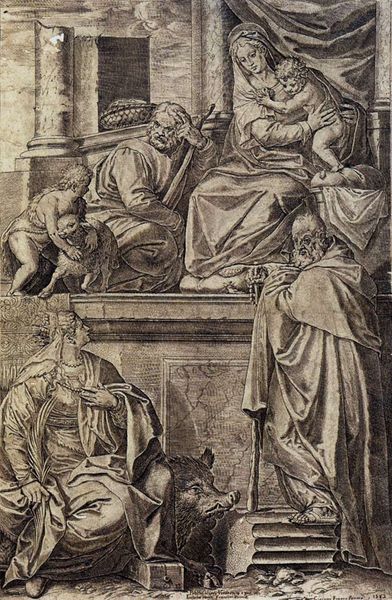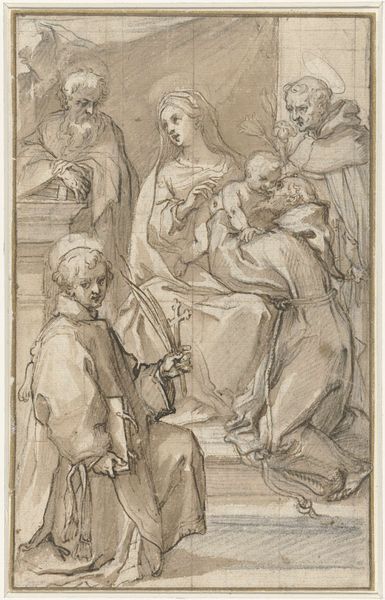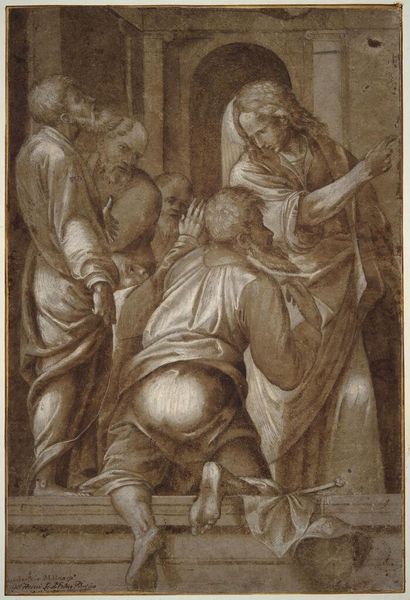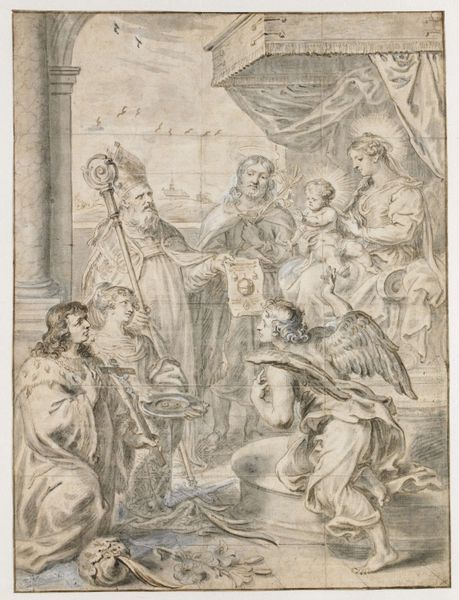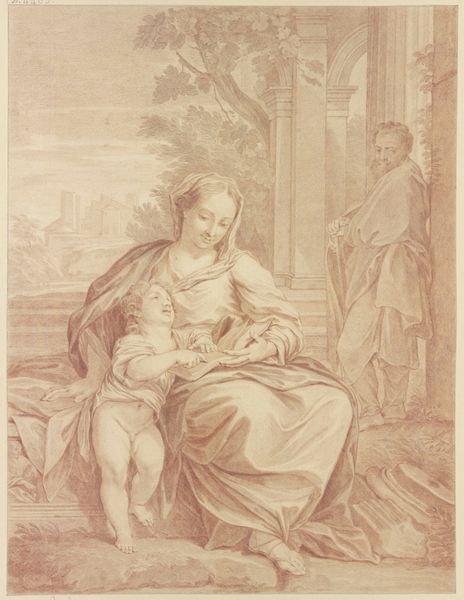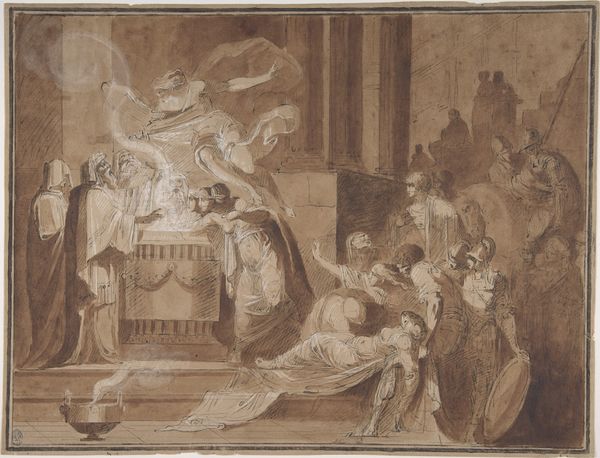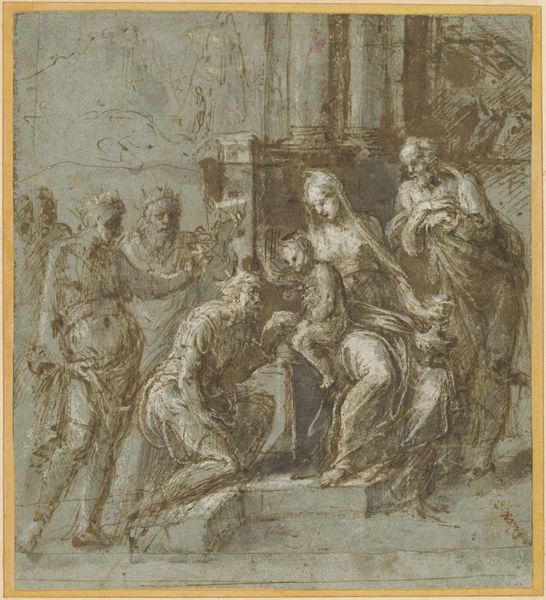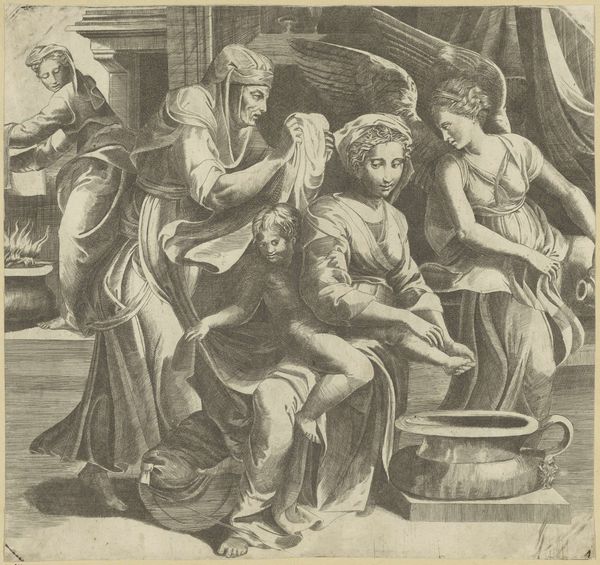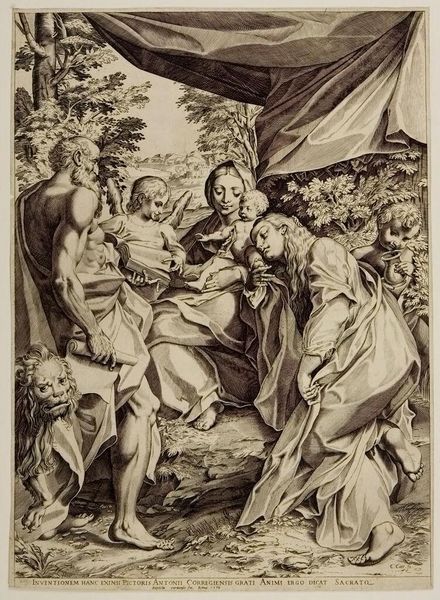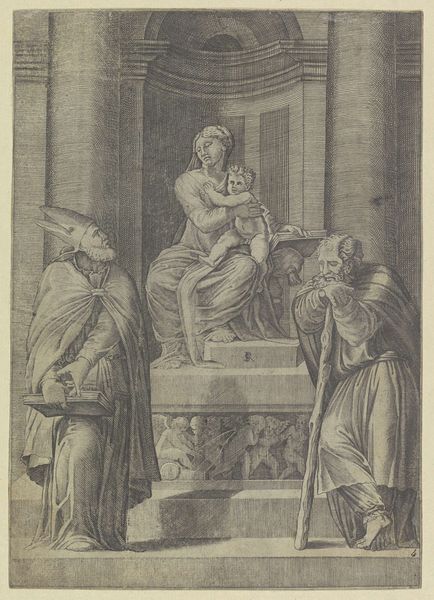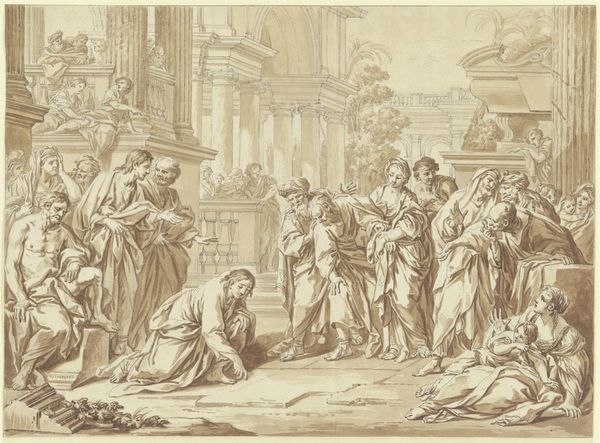
painting, oil-paint
#
portrait
#
venetian-painting
#
allegory
#
painting
#
oil-paint
#
mannerism
#
figuration
#
history-painting
#
academic-art
Dimensions: height 90 cm, width 140 cm, depth 5.5 cm
Copyright: Rijks Museum: Open Domain
Curator: Paolo Veronese's painting, titled "The Choice between Virtue and Passion," created sometime between 1590 and 1680, immediately strikes me as a fascinating study in allegorical representation. It’s an oil painting now residing here at the Rijksmuseum. Editor: My immediate reaction is focused on the almost tangible materiality of it—look at the draping fabrics! The sheer presence of that languid figure in the foreground... I am immediately drawn into the textures and the social positioning that all that costuming implies. Curator: Indeed, consider the socio-political message Veronese communicates through such deliberate choices in clothing. The opulent garments worn by Passion and Virtue indicate not only status but also prescribe very gendered roles and expectations, setting the stage for a profound choice. This artwork speaks volumes about the historical constructions of identity during this period, the era's relationship between social status and ethics, and also the constraints put on women at this time. Editor: But it’s more than just their finery—examine how the very pigment is laid down, how those textures were actually achieved through labor. Those fabrics and architectural backdrops were not conjured out of thin air. What type of workshop produced this, who were its artisans, what was the hierarchy and compensation they would have experienced as it was being fabricated? We see this idea of choice represented, but how were material conditions already structuring those available choices for artist and patron alike? Curator: That is quite perceptive. I agree that analyzing the means of production offers deep insights into societal power structures, here intertwined with artistic expression. Understanding Veronese’s place within a patriarchal system is paramount, but how could a woman view the implications of such choice given the restrictions women faced both in society and creative vocations? Editor: Exactly! Looking closely at how labor and materials come together, the painting operates on levels beyond straightforward symbolism, touching upon those very limitations themselves. To what extent was "the choice" already dictated? Curator: So well said. I find that so compelling; understanding all of this certainly illuminates how Veronese participated in, yet perhaps even subtly questioned, prevailing norms. Editor: Yes, looking past the immediate beauty can open this work toward urgent, tangible discussions about historical and material conditions.
Comments
No comments
Be the first to comment and join the conversation on the ultimate creative platform.

